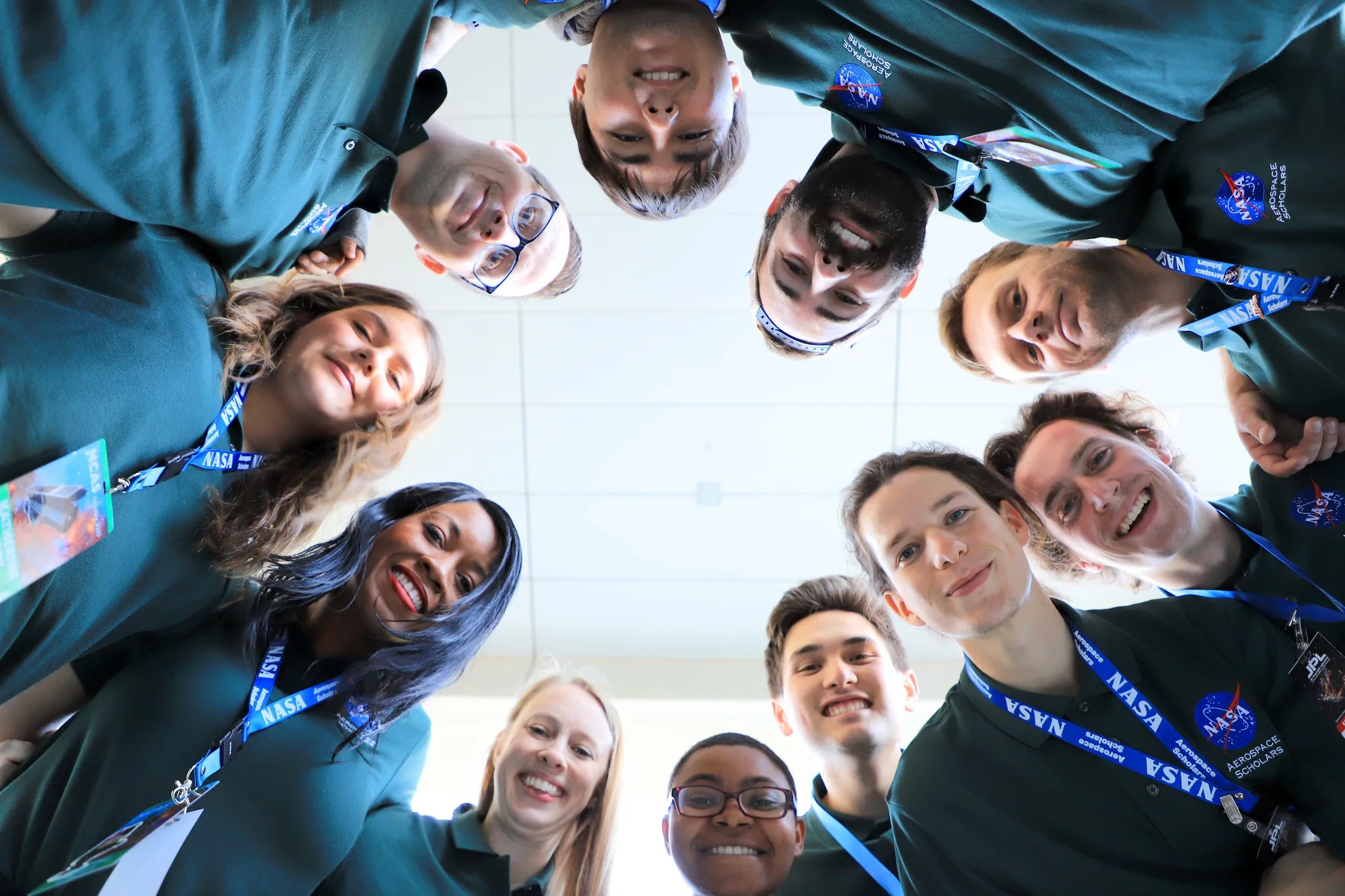Rotational Program for Scientists
Pilot Offering
Are you looking for a new experience, an opportunity to develop new skills and broaden your network, without having to make a permanent career move? Learn more about NASA’s pilot offering of a Rotational Program for Scientists.
Rotational Program Background, Description & Purpose
One of the recommendations coming out of the 2021 Science Workforce Study was the creation of an agency-wide scientist rotational program to further enhance employee development. A cross-agency team was formed to research and develop a pilot program. We are now ready to move forward with a pilot offering.
The Rotational Program for Scientists will allow scientists to temporarily rotate to another organization as an enrichment experience to broaden knowledge, skills, and perspectives. Rotational opportunities are designed with flexibility in mind. They may be full- or part-time, virtual or on-site. A hybrid approach is also an option. The length of the assignment will likely be between six months to one year, based on the needs of the host organization and the nature of the opportunity.
To kick off the pilot, the following rotational opportunities are being advertised through NASA’s Talent Marketplace for Civil Servant scientists. Search for "rotation" to see all opportunities. The opportunities will be posted on Talent Marketplace until September 30, 2022.
Program Benefits
The pilot offering will test the rotational program concept, highlight lessons learned, and determine its long-term viability, including funding needs. While the pilot is limited to Civil Servant Scientists, the longer-term goal is to explore options to possibly open the program to non-Civil Servant Scientists. The lessons learned during the pilot will help shape a broader, more sustainable, and inclusive program in the future.
The rotational program offers benefits to all - the individuals who participate, their host organization, and their home institutions.
Benefits for the Participant
Why should you want to take advantage of a rotation opportunity?
Many times, scientists feel “stuck” in the roles they have. Many may feel they are lacking experiences that will help them grow in their career, especially for moving up to Senior management positions, or may feel isolated at their Centers, lacking connections with the wider NASA community. The rotational program offers the advantage of trying something different for a limited period of time, with the safety net of returning to the home organization. It is an opportunity to increase one’s skills, knowledge, and expertise, while being exposed to a new organization, new ways of doing business, and likely a different line of work. The rotational experience will broaden one’s network and improve collaboration across organizations, establishing a base for continued future collaborations.

Benefits for the Host Organization
Hosting an employee from another Center provides many benefits:
- solve a temporary staffing shortage without a billet. A rotational employee could be the ideal solution for shorter-term, self-confined projects who lack personnel;
- provide expertise and fresh eyes added to a particular project or program. We all know that diversity and inclusion fuel innovation, and this applies also to diversity of ideas and backgrounds, such as offered by the rotational program;
- inspire additional collaboration opportunities. In an era of shrinking budgets, forging ties with another Center/organization could leverage capabilities and provide savings;
- strengthen the relationship with another Center or organization.
Perhaps the most important advantage is that cross-pollination of ideas and experiences is the catalyst for innovation. Having an “outsider” join for a limited period may revitalize the team, provide impetus for new approaches to old problems, and regenerate the corporate spirit.
Benefits for the Home Organization
Scientists on a rotational program return to their home base after a period of ~6 – 12 months. They bring back new perspectives and new ways of conducting business which they have learned elsewhere, and ties with other teams which may generate new projects and programs. By allowing its scientists to broaden their exposure and experience, the home organization may:
- expand their own capabilities, seeding future career growth;
- further strengthen their succession posture for future leadership roles by allowing their employees to have greater depth and diversity of experience;
- be inspired to increase their collaboration opportunities;
- acquire an experienced individual ready for the next step in their career.
Mission Statement
Provide the NASA science workforce with opportunities to grow professionally and to develop their career through rotational programs at other organizations, broadening knowledge, skills, and perspectives.
Vision
A future where the NASA workforce shares knowledge, skills, and best practices, to bolster understanding of the Earth and Space.
Funding for Rotation Program
Unless otherwise negotiated, the host organization is expected to fund the rotating scientist.
Accessibility Statement
We are committed to making this rotational program as accessible as possible, especially for people with disabilities. If you are seeking a reasonable accommodation to apply to a rotational opportunity or to perform the essential functions of the opportunity to which you are applying, please review the procedures at NASA Reasonable Accommodations.
For more information about this pilot program, please contact Juana Sosa at juana.e.sosa@nasa.gov or (301) 286-6229.




